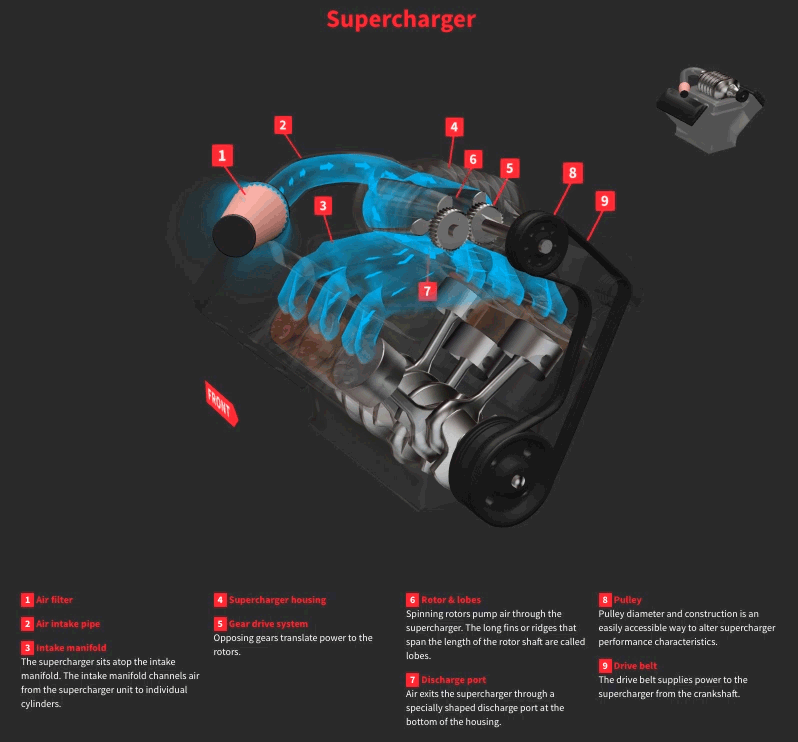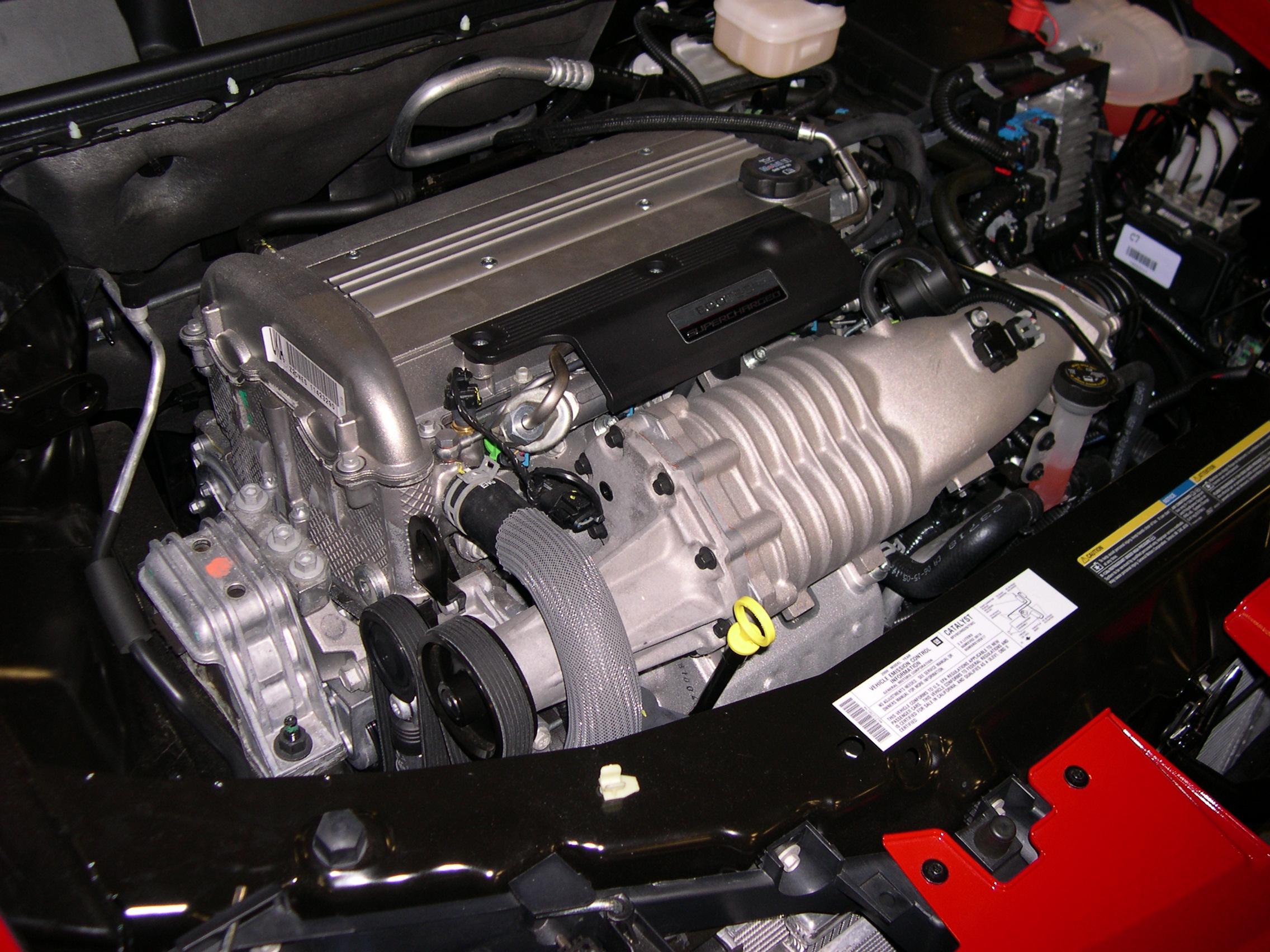Supercharger on:
[Wikipedia]
[Google]
[Amazon]

 In an
In an
 Positive displacement pumps deliver a nearly fixed
Positive displacement pumps deliver a nearly fixed

 In an
In an internal combustion engine
An internal combustion engine (ICE or IC engine) is a heat engine in which the combustion of a fuel occurs with an oxidizer (usually air) in a combustion chamber that is an integral part of the working fluid flow circuit. In an internal co ...
, a supercharger compresses the intake gas, forcing more air into the engine in order to produce more power for a given displacement.
The current categorisation is that a supercharger is a form of forced induction that is mechanically powered (usually by a belt from the engine's crankshaft), as opposed to a turbocharger
In an internal combustion engine, a turbocharger (often called a turbo) is a forced induction device that is powered by the flow of exhaust gases. It uses this energy to compress the intake gas, forcing more air into the engine in order to pr ...
, which is powered by the kinetic energy of the exhaust gasses. However, up until the mid-20th century, a turbocharger was called a "turbosupercharger" and was considered a type of supercharger.
The first supercharged engine was built in 1878, with usage in aircraft engines beginning in the 1910s and usage in car engines beginning in the 1920s. In piston engines used by aircraft, supercharging was often used to compensate for the lower air density at high altitudes. Supercharging is less commonly used in the 21st century, as manufacturers have shifted to turbochargers to reduce fuel consumption and/or increase power outputs.
Design
Types
There are two main families of superchargers defined according to the method of gas transfer: ''positive displacement'' and ''dynamic'' superchargers. Positive displacement superchargers deliver an almost constant level of boost pressure increase at all engine speeds (RPM), while dynamic superchargers cause the boost pressure to rise exponentially with RPM (above a certain RPM threshold). Another family of supercharger, albeit rarely used, is the pressure wave supercharger. Roots blowers (a positive displacement design) tend to be only 40–50% efficient at high boost levels, compared with 70-85% for dynamic superchargers. Lysholm-style blowers (a rotary-screw design) can be nearly as efficient as dynamic superchargers over a narrow range of load/speed/boost, for which the system must be specifically designed.Positive displacement
 Positive displacement pumps deliver a nearly fixed
Positive displacement pumps deliver a nearly fixed